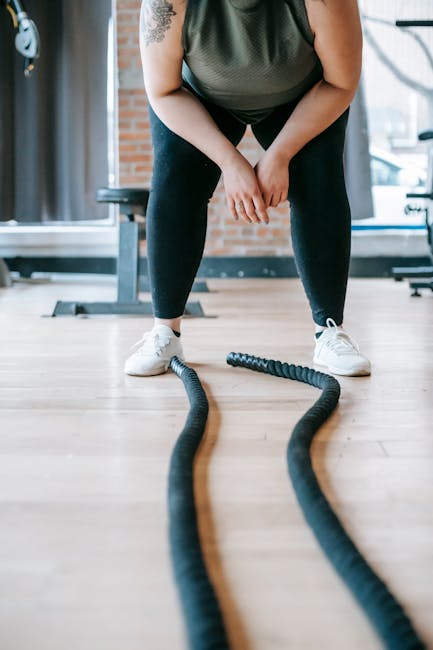Are you tired of hitting the gym day in and day out without seeing the results you crave? Do you feel like you’re spinning your wheels, with a body that’s more dad bod than Adonis? Well, fear not, my friends. I have a secret weapon that’s going to revolutionize the way you train. It’s called fasting. Yes, that’s right, fasting. The practice that dates back to ancient times, when our ancestors would go days without eating while still managing to hunt and gather their dinner. And while I can promise you won’t be chasing down a deer anytime soon, I can promise that by incorporating fasting into your weight lifting routine, you’ll see results that will have you flexing in front of the mirror like never before. So buckle up, grab a protein shake, and let’s get into the nitty-gritty of how fasting and weight lifting can maximize your training results.
Contents
- 1 1. Introduction: The Benefits of Fasting and Weight Lifting
- 2 2. Understanding the Science Behind Fasting
- 3 3. The Best Fasting Methods to Optimize Your Training
- 4 4. Combining Fasting and Weight Lifting: Tips and Tricks
- 5 5. Final Thoughts: Maximizing Your Training Results with Fasting and Weight Lifting
1. Introduction: The Benefits of Fasting and Weight Lifting
Fasting and weight lifting may sound like an odd combination, but trust me, it’s a match made in fitness heaven. Not only will it help you get that chiseled physique you’ve always dreamt of, but it will also improve overall health and well-being. Here are a few benefits that may make you want to give it a try.
Firstly, fasting can help regulate insulin levels, which in turn can aid in weight loss. When we consume too many carbs or sugars, our insulin levels rise, leading to fat storage. By fasting, we give our bodies a break from constant insulin spikes, leading to a faster and more efficient metabolism. Combine this with weightlifting, and you’ve got yourself a perfect recipe for fat burning.
Another benefit of this winning duo is increased mental clarity. A study found that fasting can improve cognitive function, which means that you will be able to focus better on your lifting and have a sharper mind overall. And let’s face it, who doesn’t want to be the smartest person in the gym? Plus, weightlifting itself has been shown to improve brain function and memory, making this combination a double whammy for the mind.
Lastly, fasting and weightlifting can improve overall longevity. Studies have shown that both practices have anti-aging benefits. Fasting can help boost autophagy, which is the body’s natural way of detoxifying and getting rid of damaged cells. Weightlifting, on the other hand, increases muscle mass and bone density, which are both important factors in preventing age-related illnesses. So, not only will you look good, but you’ll feel good too.
Now, I know what you’re thinking, “but won’t I be starving if I fast?” Not necessarily. It’s important to do your research and properly plan your meals around your fasting schedule. And let’s not forget about the post-workout meal, which is an opportunity to indulge in a well-deserved feast. So, get ready to lift some heavy weights and embrace the benefits of fasting. Your mind, body, and overall longevity will thank you.
2. Understanding the Science Behind Fasting
Are you ready to dive deep into the scientific realm of fasting? Put on your lab coat and grab your goggles, because we’re about to get nerdy.
First things first, let’s talk about insulin. You know, that pesky hormone that’s responsible for storing fat in our bodies? Well, when we eat, our insulin levels spike, which tells our body to hold onto that fat for dear life. But when we fast, insulin levels drop, allowing our body to access that stored fat for energy. So basically, fasting is like sending a memo to your body that says “Hey, remember that fat we’ve been holding onto for a rainy day? It’s raining, so let’s use it.”
But that’s not all! Fasting also triggers a process called autophagy, which basically means our body starts recycling old and damaged cells. It’s like a spring cleaning for your body! And, if that wasn’t cool enough, studies have shown that fasting can even improve brain function and increase lifespan. So basically, by fasting, you’re not only shedding those extra pounds, but you’re also improving your brain power and adding years to your life. Sounds like a pretty sweet deal to me.
- Pro-tip: If you’re just starting out with fasting, be sure to listen to your body. Don’t push yourself too hard and be sure to fuel up with healthy foods during your eating window.
- Another pro-tip: It’s okay to struggle in the beginning! Fasting is like a muscle – the more you practice, the stronger you’ll get. So, don’t give up after your first attempt. Keep at it and eventually, your body will get used to it.
- Last pro-tip, I promise: Stay hydrated! Drinking plenty of water during your fast will help keep you full and keep your body functioning properly.
3. The Best Fasting Methods to Optimize Your Training
The Best Fasting Methods to Optimize Your Training
Okay, before you roll your eyes and start debunking the idea of fasting – hear me out. Fasting has been a long-standing tradition in various cultures and religions, and it’s not just about depriving yourself of food. It’s about optimizing your body to work at its best. In fact, studies have shown that fasting can improve brain function, enhance immune system among other benefits. Here are three fasting methods that can catapult your training game:
- The 16/8 Method: This is one of the most popular fasting methods. You simply fast for 16 hours and have an eating window of 8 hours. The best part? You can choose the time that works best for you. Some people prefer to start their fast early in the day, while others opt to end their day without eating. It’s up to you!
- The 5:2 Method: This method involves eating normally for five days a week and then eating only 500-600 calories on two non-consecutive days. It may sound daunting, but the beauty of this method is that you can still eat your favorite foods during your non-fasting days.
- The OMAD Method: OMAD stands for “One Meal A Day”. Yep, you guessed it – you eat only one meal a day. This method is not for the faint-hearted, and it can take some time to adjust to, but it can work wonders for your training. Just make sure that your meal is packed with all the necessary nutrients and proteins.
So, which fasting method should you choose? Well, it depends on your lifestyle and preferences. Don’t feel pressured to choose one method over the other. Perhaps start with one fasting method and see how it works for you. The key is to find a method that doesn’t feel like a chore. Fasting shouldn’t be a punishment, but rather an opportunity to optimize your health and training!
4. Combining Fasting and Weight Lifting: Tips and Tricks
Are you tired of being a skinny-fat weakling? Want to add some muscle while shredding those love handles? Welcome to the world of combining fasting and weightlifting, or as I like to call it, “Fastlifting”. But before you dive headfirst into this lifestyle, here are some tips and tricks to avoid passing out in the gym or binge-eating a tub of ice cream after your workout.
- Stay Hydrated: Fasting can cause dehydration, which can affect your performance and recovery. Be sure to drink plenty of water before, during, and after your workout.
- Start Slow: Don’t expect to break any personal records right off the bat. Your body needs time to adjust to the new routine, so start with lighter weights and shorter workouts and gradually increase as you feel comfortable.
- Refuel with Protein: When you break your fast, make sure to consume a meal high in protein to help with muscle recovery. Chicken, fish, and legumes are all great options.
Remember, fasting and weightlifting is not a one-size-fits-all solution. Listen to your body and adjust your routine accordingly. And always remember to have fun! Who knows, you may even start to enjoy the feeling of an empty stomach while lifting heavy weights. Happy Fastlifting!
5. Final Thoughts: Maximizing Your Training Results with Fasting and Weight Lifting
When it comes to maximizing your training results with fasting and weight lifting, there are a few things to keep in mind. Whether you’re trying to build muscle or lose weight, incorporating fasting into your routine can lead to some serious gains – not to mention the added benefit of feeling like a modern-day warrior. Here are a few final thoughts on how to take your training to the next level:
- Stay hydrated: Fasting can dehydrate you quicker than a Kardashian can invent a new drink, which is why it’s crucial to keep your water bottle within arm’s reach at all times. Shoot for at least 8 cups of water a day (more if you’re sweating like a sinner in church at the gym), and consider adding some electrolytes to replenish your body’s stores.
- Practice patience: Fasting and weight lifting can be a winning combo, but it won’t happen overnight. Rome wasn’t built in a day, and neither are biceps that bulge like balloons. Stick with your routine, and trust the process – your body will thank you later (especially when you’re flexing in front of the mirror).
- Get your beauty rest: We all know sleep is important, but it’s especially crucial when you’re putting your body through the wringer with intense workouts and fasting. Aim for 7-8 hours of sleep a night, and try to keep a consistent bedtime routine (even if it means saying goodnight to Netflix earlier than you’d like). Your muscles will repair and recover more effectively, and you’ll be more likely to stick to your training routine long-term.
So there you have it, folks – the keys to unlocking your full potential with fasting and weight lifting. Remember to listen to your body, stay consistent, and enjoy the journey (no matter how many burpees it takes to get there). Happy lifting (and fasting)!
Don’t skip out on the feast just yet
Well, there you have it. Fasting and weight lifting can be a powerful combination for maximizing your training results. But before you go on a juice cleanse and deprive yourself of a juicy steak, remember that proper nutrition and balanced meals are still a crucial part of any fitness regimen.
After all, what’s the point of having killer biceps if you’re too weak to lift your fork to your mouth? So go ahead and indulge in some tasty eats – just make sure it’s fueling your gains, not undoing them.
Happy lifting and happy eating, folks!








Leave A Comment